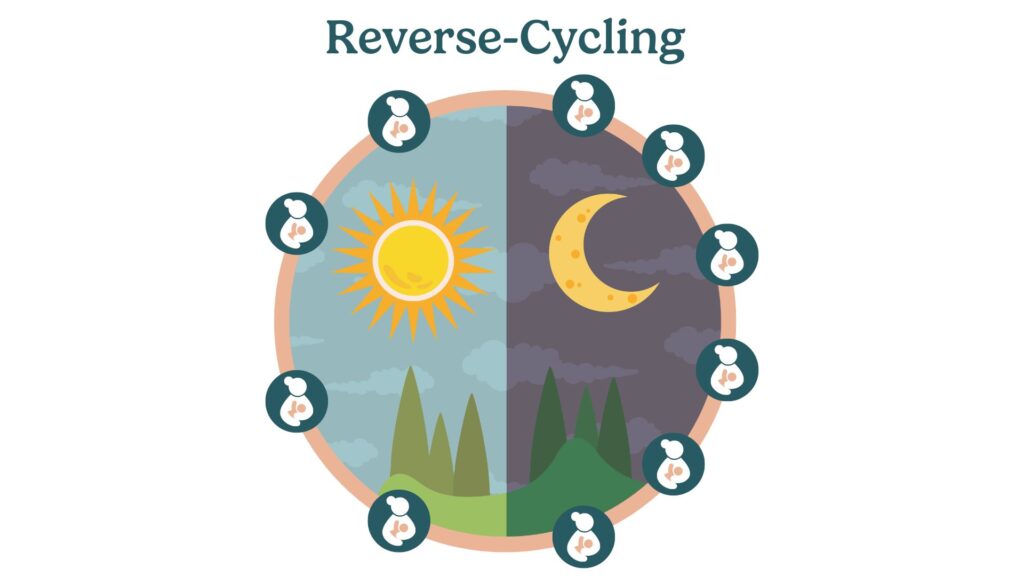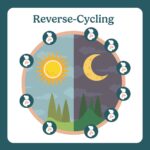reverse-cycling

Reverse-cycling
Reverse-cycling is when a baby nurses more frequently at night and less during the day. This can happen for various reasons, such as a change in routine, a return to work, or simply the baby's preference.
While it can be tiring for mamas, understanding and managing reverse-cycling can help ensure your baby gets enough milk and you get some rest.
What to watch out for
It’s important to recognize the signs of reverse-cycling and understand how to manage it. Here are some indicators and tips:
- Daytime distractions: During the day, your baby might be too distracted or active to nurse effectively. This is especially common around 4-6 months when babies become more distracted feeders.
- Comfort nursing: Your baby may seek the comfort of nursing at night due to separation during the day, such as when you're at work. They also may comfort nurse frequently at night when they’re sick, teething, or undergoing a growth spurt.
To manage reverse-cycling, try these tips:
- Daytime feeding: Offer the breast more often during the day, especially in a quiet, dimly lit environment to reduce distractions. If baby gets more of their calories during the day, they may wake less often at night for feedings. Some parents will encourage baby to feed every 2-2.5hours during the day.
- Nighttime routine: Try to keep nighttime interactions calm and quiet to help your baby understand the difference between day and night. Avoid turning on lights or loud noises during feeding sessions to encourage baby to go right back to sleep after a feed.
- Breastfeed before bedtime: Ensure your baby has a good feeding session before bed to help them stay fuller for longer. Some parents consider utilizing a “dream feed” to fill baby up before a long stretch of sleep. This may look like putting baby to bed at 8pm, then getting baby out of their crib around 10:00pm before they fully wake up and feeding them, then putting them right back down to sleep.
Physical limitations or health circumstances
Certain circumstances can contribute to reverse-cycling:
- Return to work: If you’re away from your baby during the day, they might compensate by nursing more at night.
- Changes in routine: Any significant change in your baby's routine, such as travel or a new caregiver, can trigger reverse-cycling.
- Teething or illness: Babies may seek the comfort of nighttime nursing when they're teething or not feeling well.
Other terms
Understanding related terms can help you better manage reverse-cycling and breastfeeding challenges:
- Cluster feeding: When a baby nurses more frequently during certain times of the day, often in the evening.
- Night feed: Breastfeeding sessions that occur during the night.
- Comfort nursing: When a baby nurses not just for nourishment but also for comfort and soothing.
- Lactation consultant: A professional who can provide support and guidance on breastfeeding issues.
- Pumping: Using a breast pump to express milk can help maintain supply and provide milk for daytime feedings.


